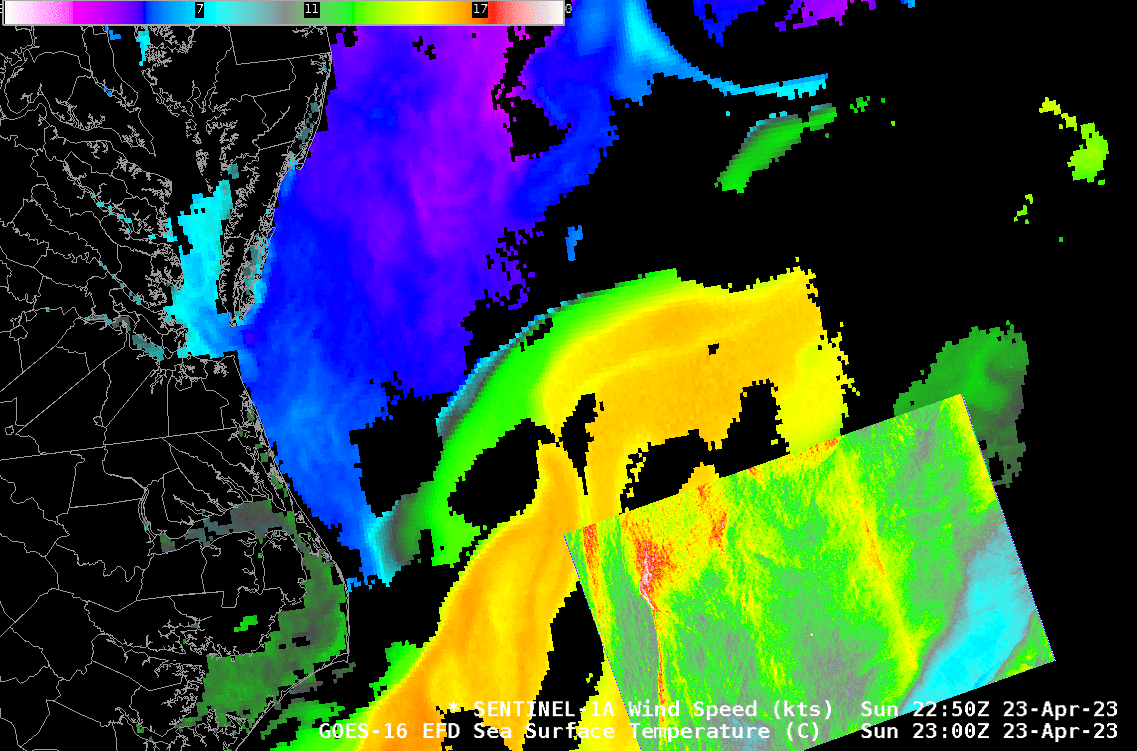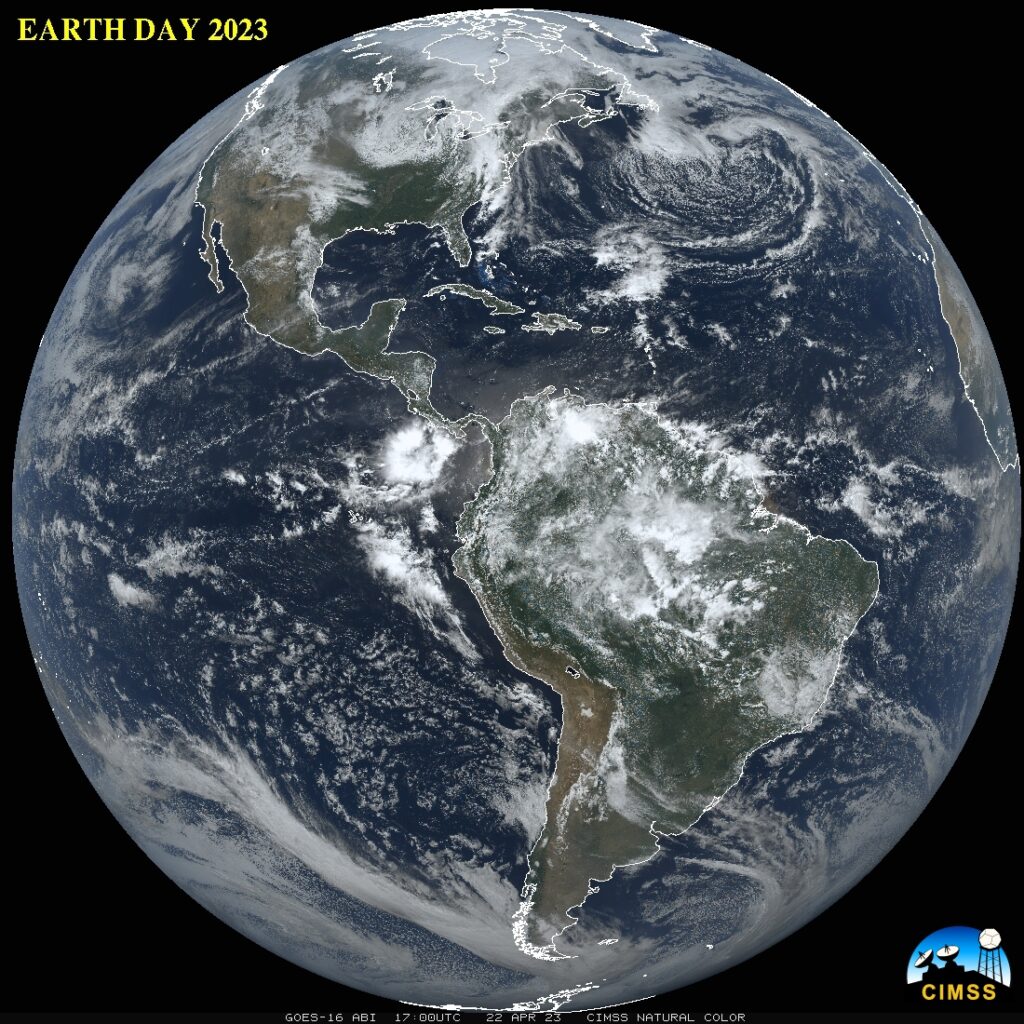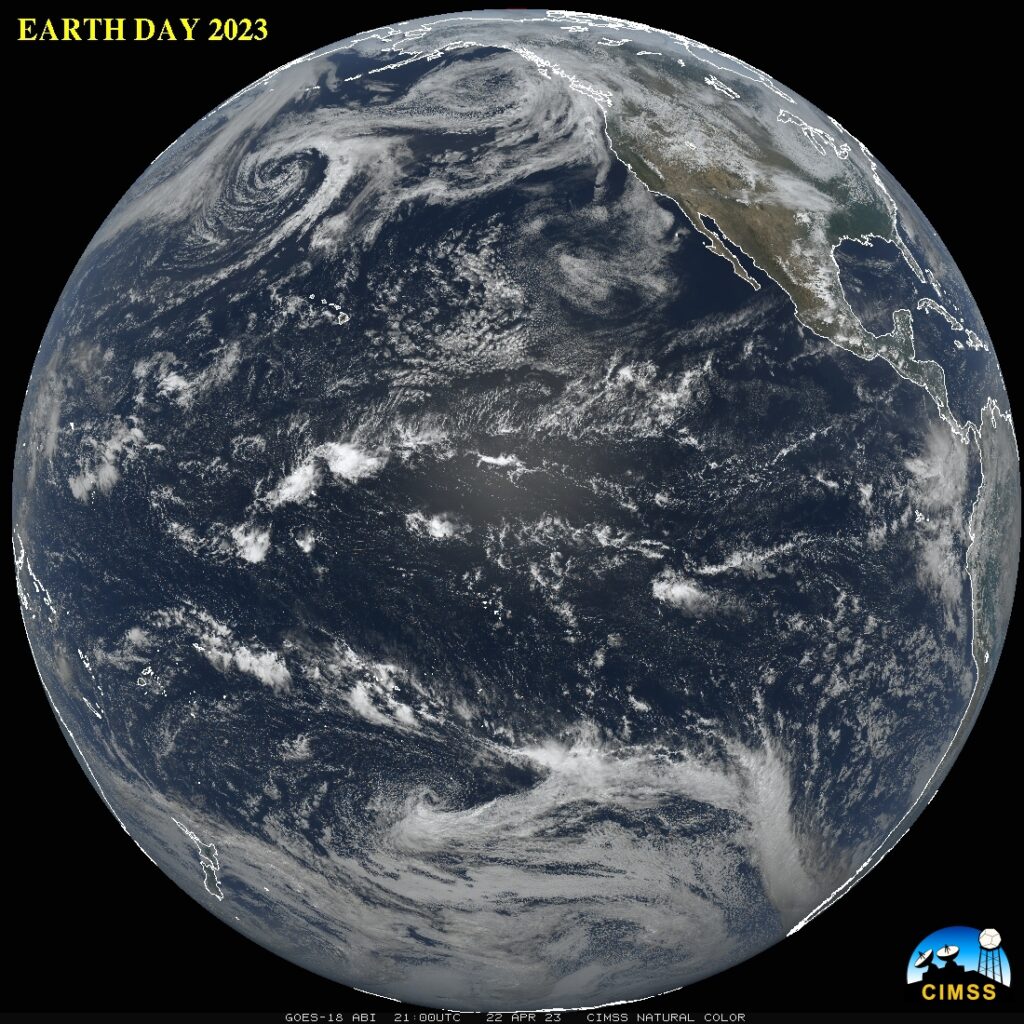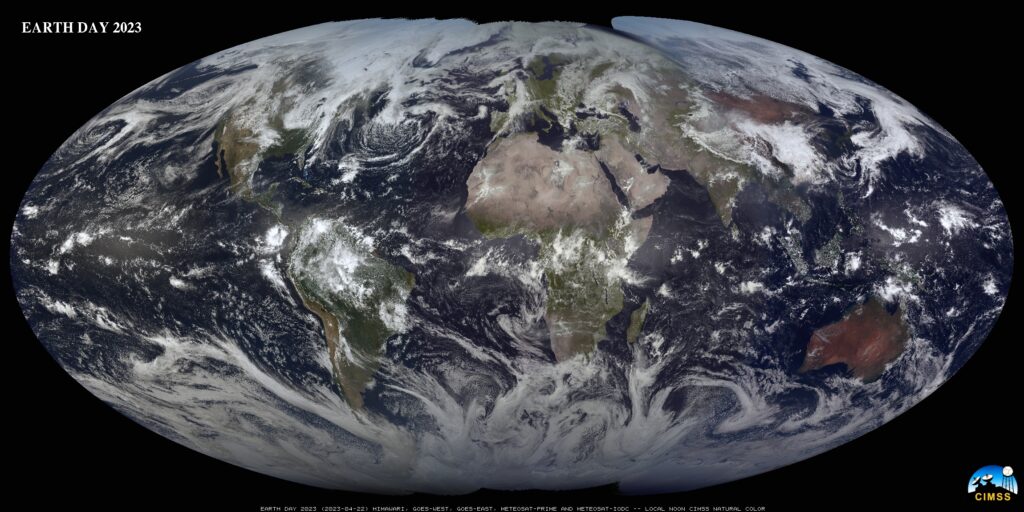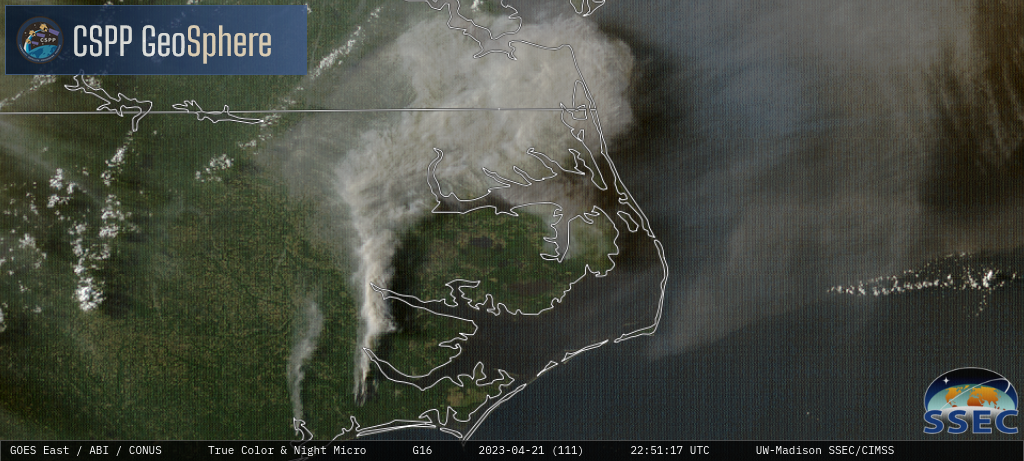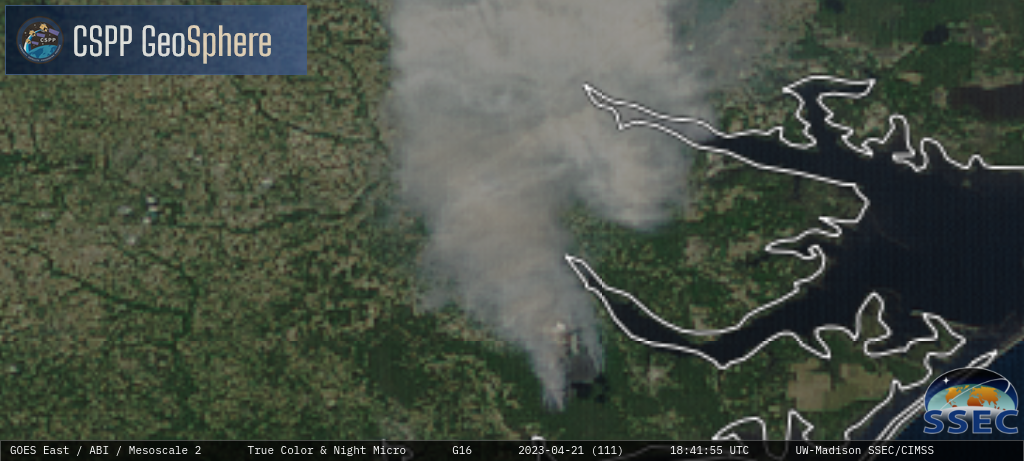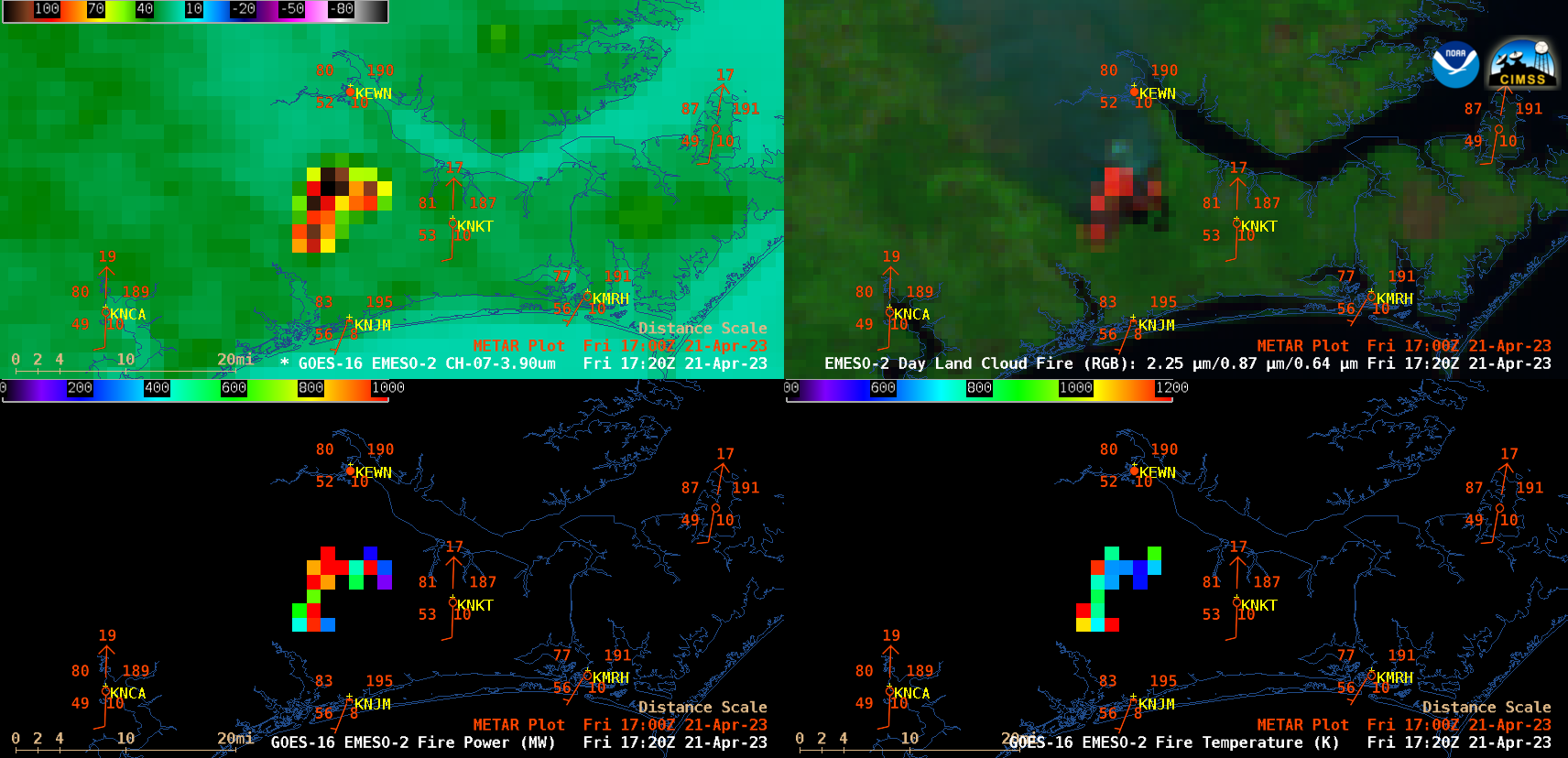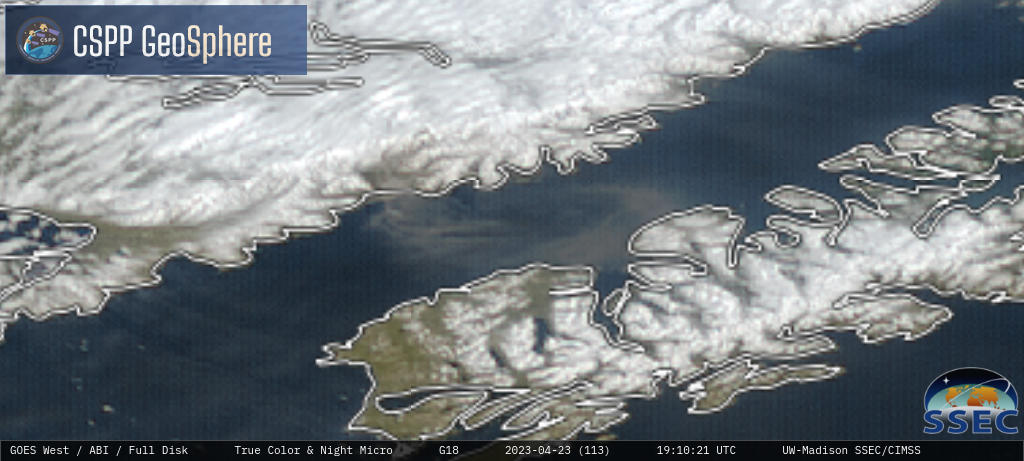
10-minute Full Disk sector GOES-18 (GOES-West) Nighttime Microphysics RGB + daytime True Color RGB images from the CSPP GeoSphere site (above) showed a plume of resuspended ash (from the 1912 Novarupta-Katmai eruption in Alaska) that was being transported offshore across the Shelikof Strait toward Kodiak Island — and wrapping into an eddy circulation within the... Read More

10-minute GOES-18 Nighttime Microphysics RGB + daytime True Color RGB images [click to play animated GIF | MP4]
10-minute Full Disk sector GOES-18
(GOES-West) Nighttime Microphysics RGB + daytime True Color RGB images from the
CSPP GeoSphere site
(above) showed a plume of resuspended ash (from the
1912 Novarupta-Katmai eruption in Alaska) that was being transported offshore across the
Shelikof Strait toward Kodiak Island — and wrapping into an eddy circulation within the Strait on 23 April 2023.
The entrainment of resuspended ash within the eddy circulation was more apparent in 1-minute Mesoscale Domain Sector GOES-18 Nighttime Microphysics + daytime True Color RGB images (below).

1-minute GOES-18 Nighttime Microphysics + daytime True Color RGB images [click to play animated GIF | MP4]
1-minute GOES-18
Dust RGB images
(below) include plots of surface/buoy/ship reports and GOES-18
Derived Motion Winds — note how the wind direction at
Shelikof Strait Buoy 46077 changed as the eddy circulation developed. Derived Motion Winds indicated that portions of the offshore resuspended ash plume were moving at speeds up to 20 knots.
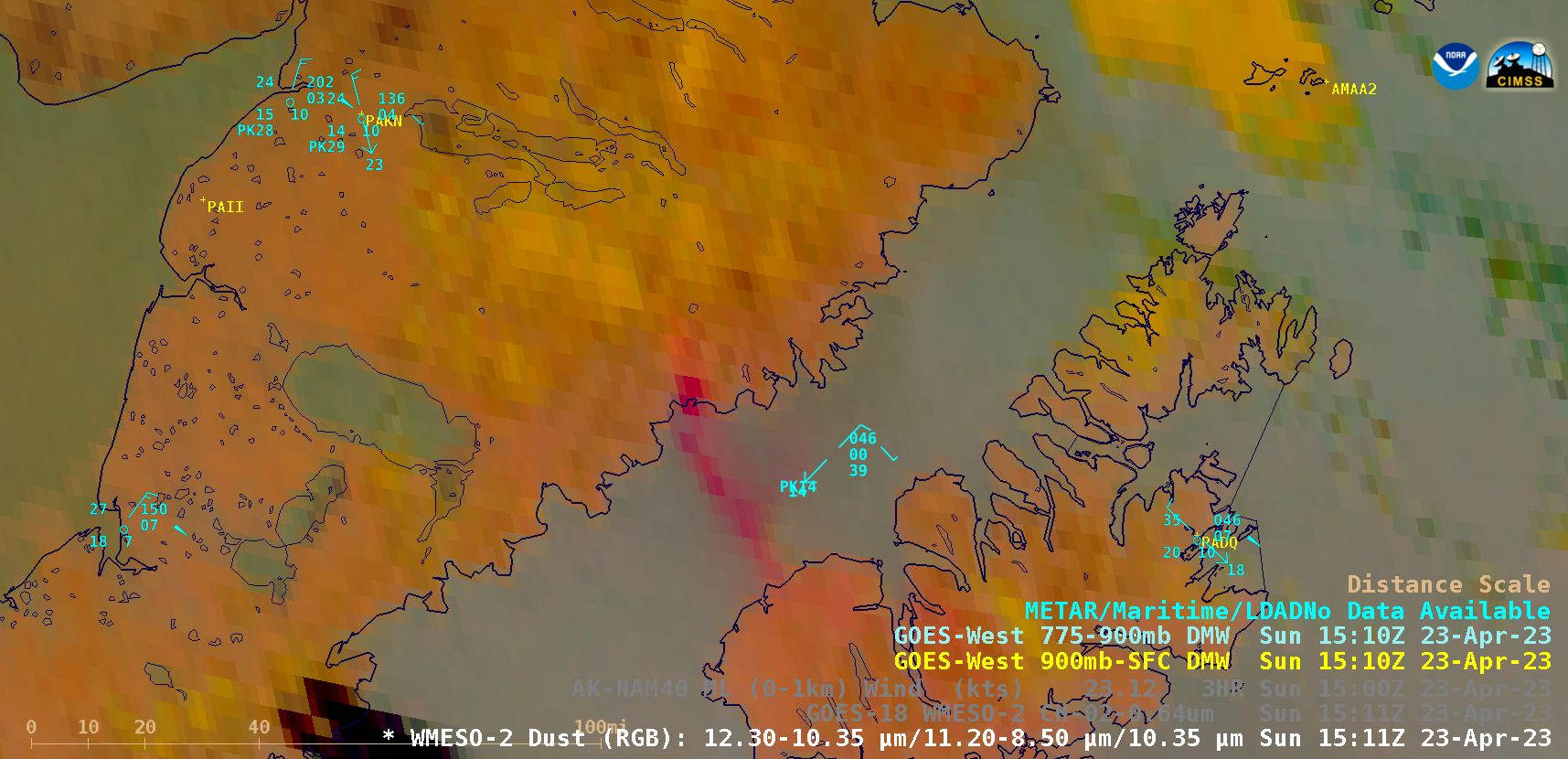
GOES-18 Dust RGB images [click to play animated GIF | MP4]
A toggle between GOES-18 Dust RGB and Topography images
(below) showed that the plume was emerging from the ash-filled
Valley Of Ten Thousand Smokes.
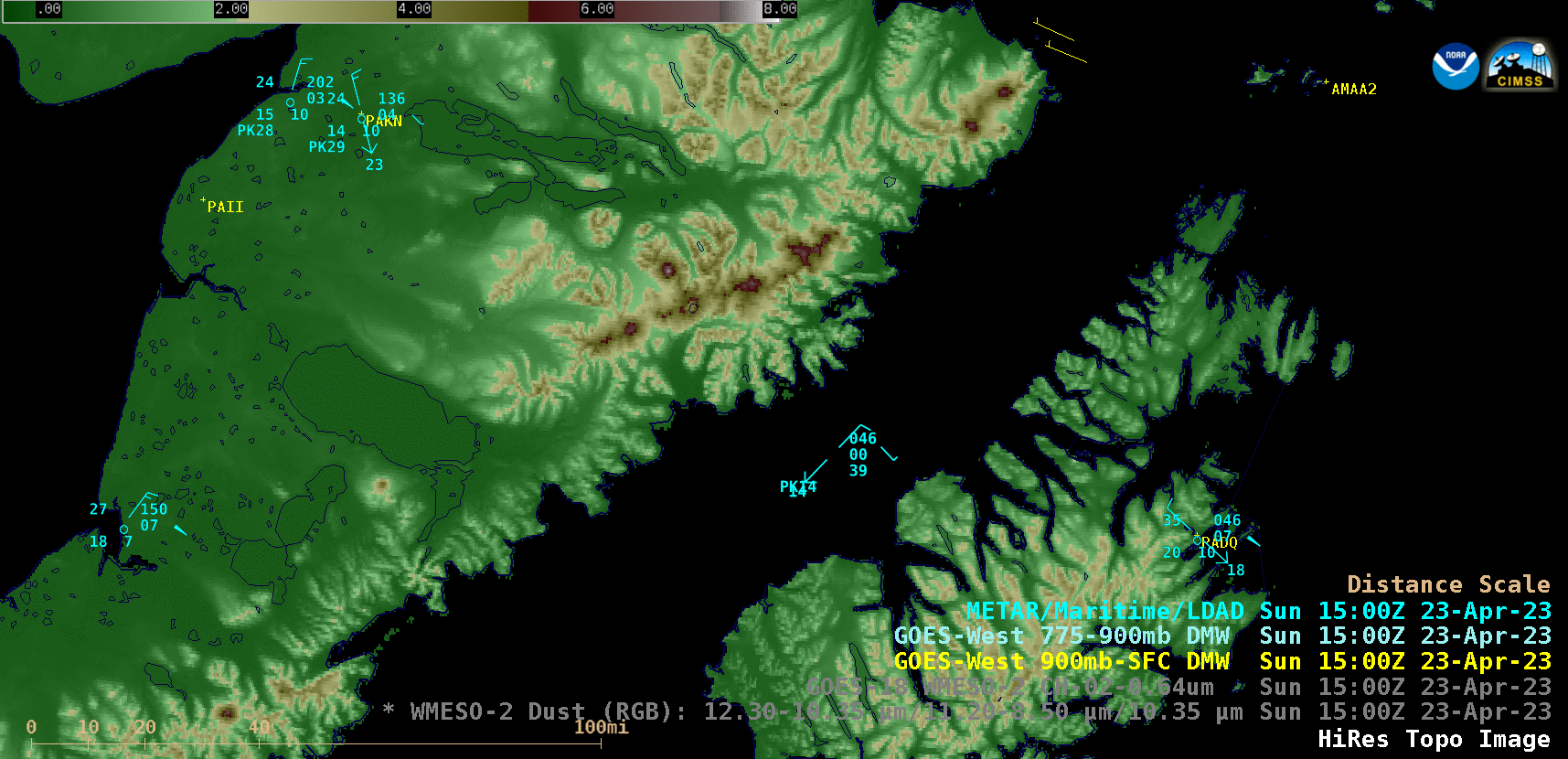
GOES-18 Dust RGB and Topography images [click to enlarge]
Since this particular plume was composed of a mixture of aged ash and more recent sediment from glacial melt (rather than purely fresh volcanic ash), the Dust RGB did a better job at highlighting the plume — as seen in a comparison of
Ash RGB and
Dust RGB images at 1500 UTC and 1600 UTC
(below). Although the two RGBs use the same spectral bands, they are scaled differently (in order to better depict typical ash or dust features).

Comparison of Ash RGB and Dust RGB images at 1500 UTC and 1600 UTC [click to enlarge]
RCM-1 Synthetic Aperture Radar (SAR) winds (
source) at 1646 UTC
(below) revealed the area of lighter wind speeds (darker shades of blue) within the eddy circulation over the Shelikof Strait.
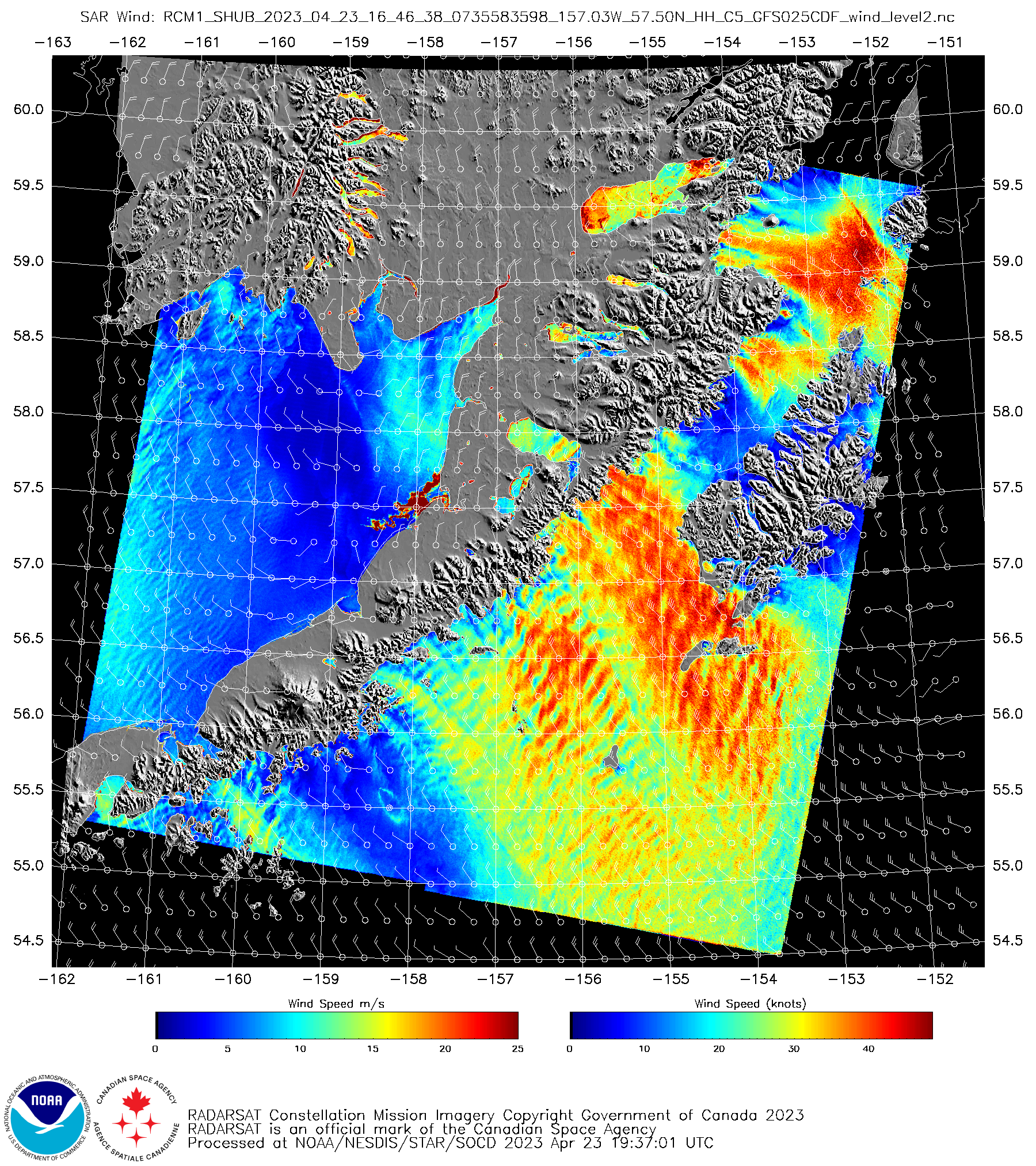
RCM-1 SAR winds at 1646 UTC [click to enlarge]
View only this post
Read Less

